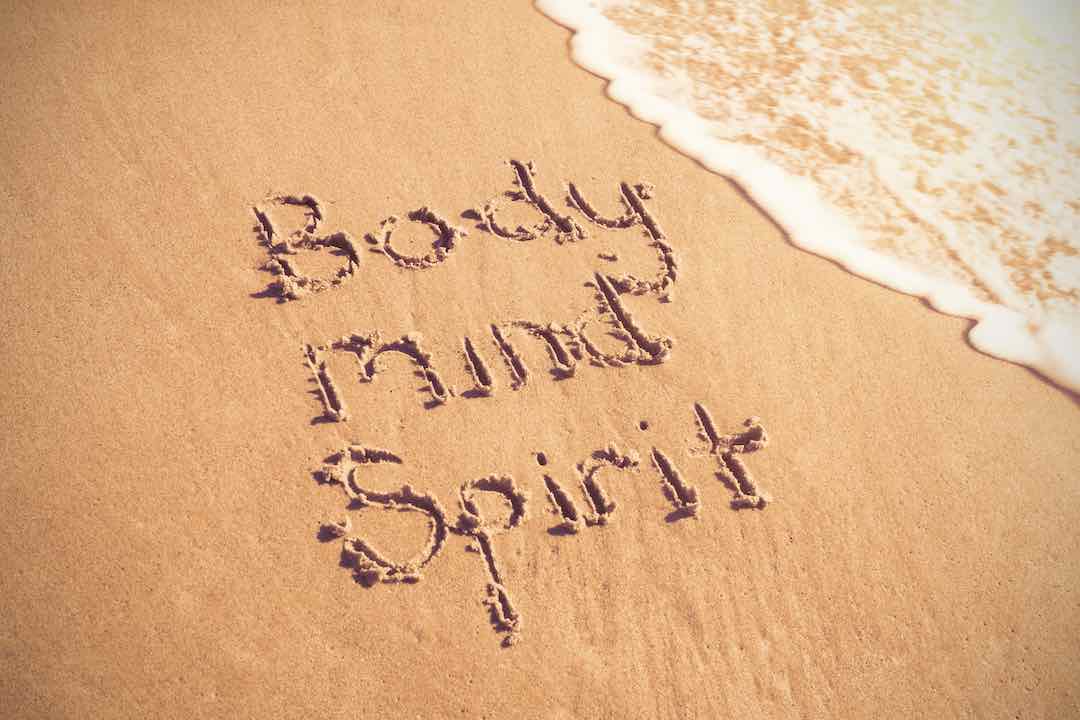Warning: Undefined array key 1 in /var/www/wp-content/plugins/monarch/monarch.php on line 4359
by Barbara Zagata
Float therapy, viewed by many as the ultimate stress reliever, is a highly effective way to establish a very deep meditative state of mind. By giving yourself this gift of absolute stillness on a regular basis, you’ll greatly increase your ability to feel less stressed, distracted, or disturbed, and more capable of dealing with and managing life’s limitless minutia.
Physically, mentally, emotionally and spiritually, floating (at one time called sensory deprivation tanks) is a multi-purpose therapeutic modality with the potential to be the most rewarding time-out ever. This version of retreating from the world is increasingly precious in an era where so much of what we experience in our daily lives is socially engineered to capture our attention.
WHAT IS FLOATING?
Imagine your own private spa, about 8 feet long and 4 feet wide, with about 10 inches of water and 1000 pounds of Epsom salt to make you completely buoyant. This reduction in gravity is what makes it so easy to feel like you’re merging into everything, limitless, and free of boundaries. The water and air temperature are close to your body temperature, about 93 degrees. So you’ll feel perfectly comfortable and totally nurtured, almost like you’re being held.
The tank that you step into has a hood and walls, so there’s no light or sounds. (You can choose to leave a light on if you prefer.) You’ll only hear your own heartbeat and breathing. At first, this new experience may seem uncomfortable, even intimidating. But breathing through the little layers of anxiousness that are bound to surface will pay off exponentially.
For many, it takes about 20 minutes to calm the mind and embrace the experience, as you begin to eventually release yourself into the warm and totally safe waters. For some, it may take a few sessions to fully relax into it.
WHY FLOAT?
One of the greatest challenges to meditation or even simply sitting still for any significant amount of time is the need to get up and do something: something productive, interesting or entertaining. The need to be ceaselessly stimulated, whether by radio, television or our cell phones, has become an addiction in itself.
Technology has had the effect upon us similar to living in an arcade or a Vegas casino. The constant stimulation means our brains never get to relax––always on high alert–– reacting to this and responding to that. Over time, this constant stimulation begins to deplete our bodies, minds and spirit.
For many, there just isn’t any energy left at the end of the day for creative pursuits or even a stimulating conversation with a loved one. This constant barrage of stimulation encourages us to just “check-out” at the end of a long day. As a result, we choose to zone out in ways that make us increasingly unavailable to ourselves and to our loved ones. Too much of this can lead us towards an unfulfilled and distracted life.
Thanks to these unprecedented levels of constant stress, it’s often difficult to sleep through the night. Our minds don’t truly rest even while sleeping. One of the reasons floating is such a highly effective therapy is that our bodies and our brains get to rest deeply.
When any part of our body gets to rejuvenate itself, it performs better when needed, right? Doesn’t it make sense then, that if we allow this key component of our mental acuity a chance to deeply replenish itself we’ll be better prepared when life does get tougher?
FLOAT THERAPY BENEFITS
As human beings, our physical, emotional, mental and spiritual bodies are intrinsically linked; heal one area and the other areas benefit too.
Physical
Floating is an excellent tool for recovery that helps muscles repair more efficiently by promoting vasodilation. Vasodilation creates better blood flow to the limbs, organs and brain. This increased circulation helps soft tissue injuries heal faster making it a very effective form of therapy for athletes.
Floating is incredibly effective for stress-related pain because reducing anxiety helps muscles relax and relaxed muscles result in better circulation. Numerous science-backed studies demonstrate immediate and cumulative benefits of floating for patients with Fibromyalgia. Other studies indicate enhanced athletic performance.
Even those who suffer from chronic back pain due to degenerative disc disease and herniated disks have expressed relief, thanks to regular floating sessions.
Mental/Emotional
Is chronic worrying depleting your bandwidth? If so, floating is a proven way to reduce the risk of hypertension and anxiety. And because it’s such a powerful form of stress relief, it also has the benefit of enhancing creativity. The bottom line is this: floating might be the most effective stress and anxiety treatment available with the fewest side effects.
Ever notice that when you’re especially exhausted, you tend to be more reactive than responsive? In his book, Emotional Intelligence: Why It Can Matter More Than IQ, author Daniel Goleman coined the term, “amygdala hijack” which is an inappropriately strong, overwhelming emotional response to something that triggers you. The amygdala is located in that area of the brain that’s in charge of processing emotions, memory, motivation and survival instincts, as in the fight or flight response. Floating helps the amygdala rest.
Spiritual
Because floating feels amazingly good, this natural high is addicting in an empowering way. It has a “ripple effect” into other areas of life that adds to one’s general peace of mind.
Peaceful, easy feelings can be cultivated so that they become the norm rather than an exception. By expanding your awareness of self you’ve also begun to master your mind. With mental mastery and self-awareness, emotional healing can be easier, because an expanded sense of self naturally leads to greater confidence. Feeling authentically empowered is priceless.
How are we to solve today’s problems? Not with the same mindset that created them, according to Albert Einstein. He believed that we must allow ourselves the simple luxury of doing nothing––time to just “think”–– allowing us to change our inner world.
There are hundreds of anecdotes about creative geniuses who tuned into an idea that changed the course of humanity, all while they were in a deeply relaxed state. The heightened creativity that results from floating can be empowering.
WHO SHOULDN’T FLOAT?
In spite of the many healing benefits of floating there are some who should avoid it:
-
- Persons with kidney disease
- Diabetic and insulin-dependent individuals
- Those with communicable diseases or open or healing skin wounds
- People with high or low blood pressure
- Anyone taking seizure medication.
- It’s also possible the detoxifying effects of floating could negate the effectiveness of chemotherapy.
If you have any doubts about the contraindications, float therapy centers will have a more complete list.
OTHER FLOAT THERAPY QUESTIONS ANSWERED:
Are float tanks sanitary?
The salinity levels in a float tank are inhospitable to bacteria, including microbes and other pathogens. Some centers also use Ozone and UV (ultraviolet) treatments to purify the water. Hydrogen peroxide is another sanitization method.
Will I fall asleep while floating?
While it’s possible to fall asleep, most people remain in a state of deep relaxation, remaining clear-headed and self-aware. It is similar to the state you feel yourself in between sleep and wakefulness.
What does it cost to float?
As with most services, the cost will vary depending upon your location. But you can expect to pay around $50 to $75 for a one-hour session (check out Groupon). If one hour seems like a long time, know that most people are surprised how quickly the time passes. If you find the experience uncomfortable, you can choose to get out whenever you want.
Can I purchase a tank for home use?
Should you become pleasantly addicted to float therapy, you can actually purchase one for your home. Prices range from $10,000 to $28,000. If you live in an area that experiences long, cold winters, the luxury of this deeply healing experience may be well worth the investment. Since floating enhances creativity, you can imagine you’re floating in Fiji, Tahiti or the Caribbean.
Do you wear a bathing suit?
It’s best not to wear a bathing suit because the extra sensation detracts from the overall experience. The room is completely private so a bathing suit isn’t necessary.
Is it okay to eat before floating?
While it’s perfectly okay to float after eating, you’ll likely be distracted by the sounds and sensations going on in your belly. So in order to maximize the benefits by minimizing distractions, you may want to eat an hour or two before your session.
What can I expect to feel like after floating?
After enjoying this profound state of relaxation, you may feel overly sensitive to light, sound and other people for a little while after the experience. So you may not want to run to Costco right after. Be gentle with yourself. Make the most of your heightened sense of awareness by going slowly, breathing deeply and allowing yourself to enjoy life’s simple pleasures.
What else should I know?
Float tanks will strip away spray tans and bronzing lotions. Someone who’s recently colored their hair should avoid floating for about a week. Additionally, anyone who’s received a new tattoo or piercing should not float for 3-4 weeks.
It may seem counterintuitive or just plain illogical that doing absolutely nothing can do so much for one’s well-being. From a stronger immune system to pain and stress relief, heightened creativity and enhanced athletic performance, float therapy is emerging as one of the most effective ways to take charge of your health and happiness.
I’m a self-professed madman, adventurer, photographer, certified High-Performance Coach, martial artist, and licensed physical trainer specializing in senior fitness. My passion is to continue growing and developing into my own unique, gifted, and joyful authenticity, while committing myself towards doing my own special part to help change the world. My mission is to help others find their own direction and purpose in life, by means of mentoring, teaching, and empowering.











